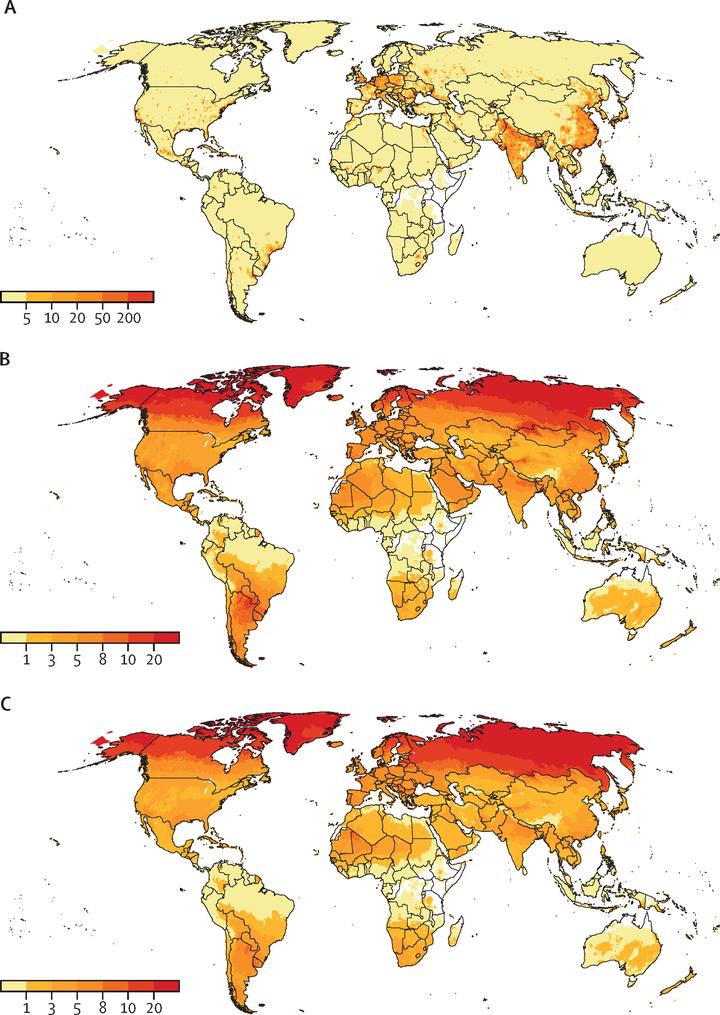Global, regional, and national burden of mortality associated with cold spells during 2000–19: a three-stage modelling study

Abstract
Background. Exposure to cold spells is associated with mortality. However, little is known about the global mortality burden of cold spells. Methods. A three-stage meta-analytical method was used to estimate the global mortality burden associated with cold spells by means of a time series dataset of 1960 locations across 59 countries (or regions). First, we fitted the location-specific, cold spell-related mortality associations using a quasi-Poisson regression with a distributed lag non-linear model with a lag period of up to 21 days. Second, we built a multivariate meta-regression model between location-specific associations and seven predictors. Finally, we predicted the global grid-specific cold spell-related mortality associations during 2000–19 using the fitted meta-regression model and the yearly grid-specific meta-predictors. We calculated the annual excess deaths, excess death ratio (excess deaths per 1000 deaths), and excess death rate (excess deaths per 100 000 population) due to cold spells for each grid across the world. Findings. Globally, 205 932 (95% empirical CI [eCI] 162 692–250 337) excess deaths, representing 3·81 (95% eCI 2·93–4·71) excess deaths per 1000 deaths (excess death ratio), and 3·03 (2·33–3·75) excess deaths per 100 000 population (excess death rate) were associated with cold spells per year between 2000 and 2019. The annual average global excess death ratio in 2016–19 increased by 0·12 percentage points and the excess death rate in 2016–19 increased by 0·18 percentage points, compared with those in 2000–03. The mortality burden varied geographically. The excess death ratio and rate were highest in Europe, whereas these indicators were lowest in Africa. Temperate climates had higher excess death ratio and rate associated with cold spells than other climate zones. Interpretation. Cold spells are associated with substantial mortality burden around the world with geographically varying patterns. Although the number of cold spells has on average been decreasing since year 2000, the public health threat of cold spells remains substantial. The findings indicate an urgency of taking local and regional measures to protect the public from the mortality burdens of cold spells.